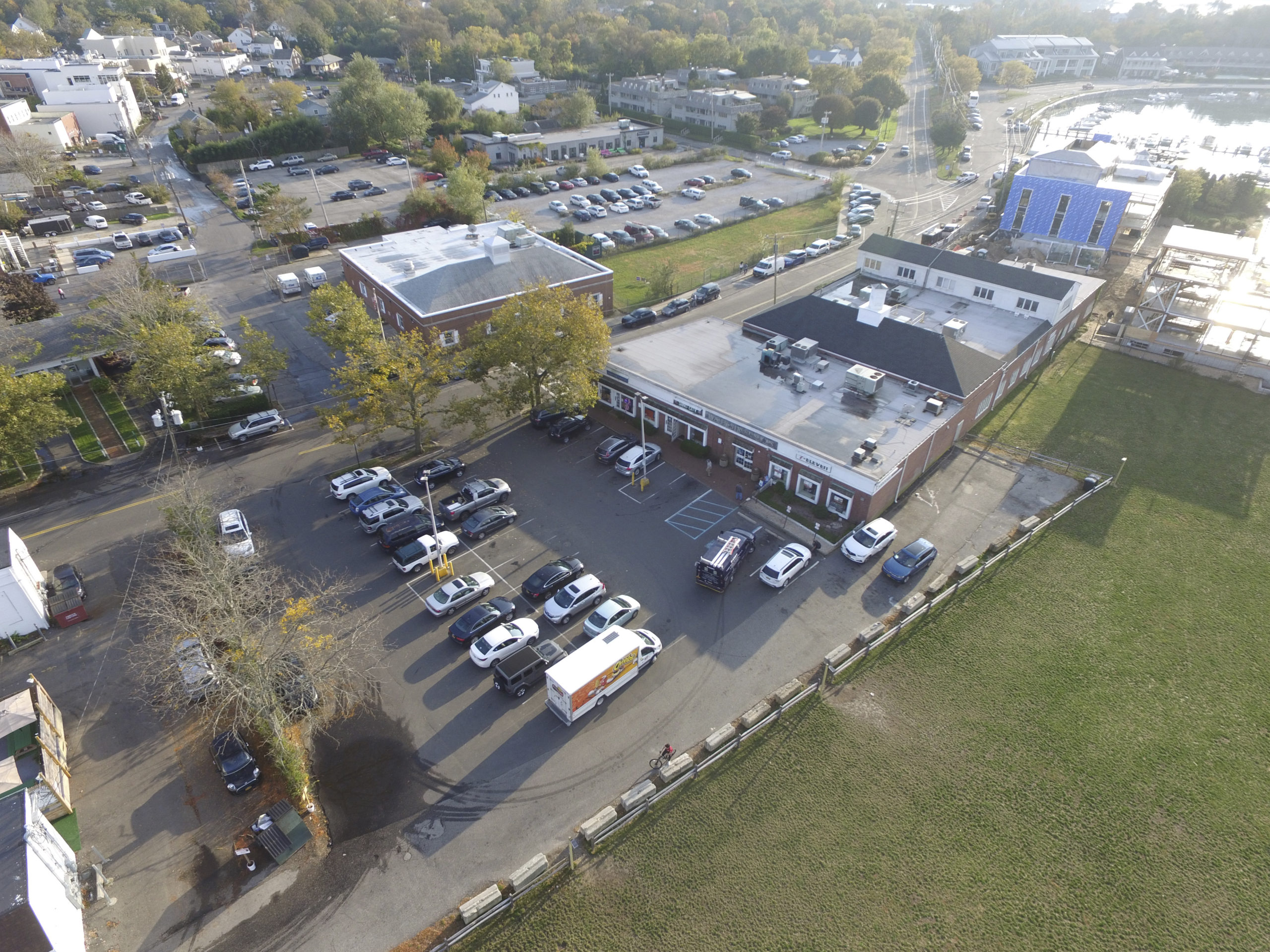
Three months after Bay Street Theater announced that it had acquired the Water Street Shops property as its future home, its representatives were cross-examined on Tuesday over the exact nature of their plans by members of the Sag Harbor Village Board.
Responding to rumors that have been running rampant in the community, board members had questions about the size of the building Bay Street would propose for the site of the 7-Eleven convenience store, whether there were plans to build more than one building as part of the theater complex, and whether the theater had set its sights on expanding its future campus to include buildings on Bridge and Rose Streets.
Adam Potter, the chairman of the not-for-profit organization that is raising funds and designing the theater, told the board that he hoped a design would be unveiled within 30 days, but he assured Trustee James Larocca that rumors of a three-story, 35,000-square-foot building were not accurate.
“We do not envision a big glass box on the water, we do not envision a big cement box on the water,” he said, adding that the theater wants a building that is light and airy and provides public access to John Steinbeck Waterfront Park. He said the building would likely be three stories, with the third floor limited to mechanical elements such as heating air conditioning units.
“The last thing we want to create is a space that Bay Street can’t afford to maintain,” added Bay Street’s executive director, Tracy Mitchell.
Trustee Bob Plumb asked if Bay Street had plans to build more than one building on the site or whether it planned to expand its holdings. “Do we still need housing for our artists? Absolutely,” replied Mr. Potter, saying Bay Street spends approximately $300,000 every summer renting space for its artists and would eventually be interested in purchasing housing.
“We are not doing anything else right now,” Ms. Mitchell interjected. “Our board of trustees has said, ‘That’s it. We have the 7-Eleven property. Build the theater.’ That’s the priority. We can deal with housing down the road if and when we have the funds to do so.”
But Trustee James Larocca said village officials had been told by a tenant of a building on Bridge Street that he had to move out because the building has been sold. Mr. Potter said Bay Street was searching for new space for some of the tenants of Water Street shops. “Nothing has been purchased,” he said. “There’s been a lot of rumors and speculation.”
But when Mr. Larocca rephrased the question to ask if any buildings were currently under contract, Mr. Potter clarified himself. “There may be things in contract that I can’t comment on one way or the other,” he said.
Mr. Potter was also asked by Mr. Plumb why the fundraising organization was named Friends of Bay Street & Sag Harbor Redevelopment if it was only interested in building a theater. “It was a marketing mistake,” Mr. Potter responded, noting that the name referred to the planned redevelopment of Water Street Shops building. He said the second half of the name has since been dropped.
And Mr. Larocca wanted to know why Friends of Bay Street was incorporated in Delaware and not New York, and whether as a nonprofit, it would be willing to help make up for the future shortfall in taxes when Water Street Shops, and possibly other properties, are taken off the tax rolls. The Delaware incorporation was done on advice of Friends of Bay Street’s attorney, and yes, the organization would be open to making what is known as PILOT, or payments in lieu of taxes, provided it was done fairly, Mr. Potter replied.
Mr. Larocca also asked if Bay Street would consider dropping its plans for the Water Street Shops site, and building instead on the National Grid gas ball parking lot site and the Schiavoni property across the street if the village could wrangle the funds necessary to buy that land.
“I think we’re too far down the road at this point, Jim,” Mr. Potter replied.
Trustee Aidan Corish said he was concerned, in light of a petition circulated and full-page ad that appeared in last week’s Sag Harbor Express, that Bay Street was hoping to circumvent village parking requirements.
“When I see the addition of 99 seats in conjunction with a request to remove parking requirements, my level of interest is raised,” he said.
But Scott Schwartz, Bay Street’s artistic director, said the main theater, which will have 299 seats, the same as the current Bay Street theater on Long Wharf, will not be in use at the same time as a second 99-seat space that is intended for use for smaller productions and educational programs.
The new theater will allow Bay Street to expand its programming with “a state-of-the-art facility that will be integrated into the park,” Mr. Schwartz added.
Stephen Hamilton, one of Bay Street’s co-founders, who recently returned as its director of external affairs, said that when Sybil Christopher, Emma Walton and he started the theater, they knew it would have to have its own home to survive.
“We are in a position now to actually do that,” he said, adding that the theater could be the cultural anchor of the not only the village, but the entire East End. “It is an opportunity we can’t miss.”